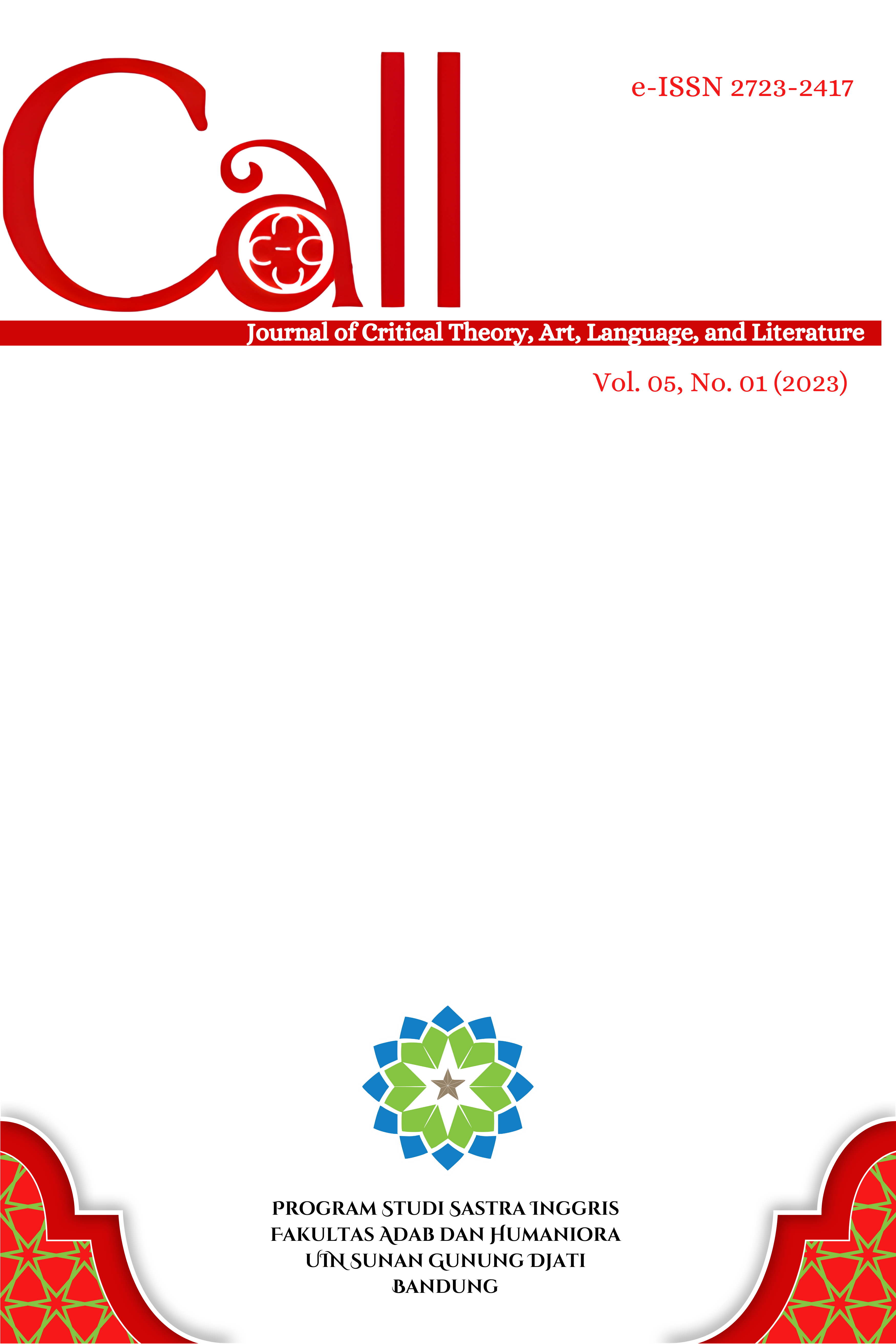THREE-DIMENSIONAL ASPECTS OF THE MAIN CHARACTER IN DELIA OWENS' WHERE THE CRAWDADS SING
DOI:
https://doi.org/10.15575/call.v5i1.20809Abstract
Egri's three-dimensional theory (1923) was employed to examine the multifaceted aspects of Catherine Danielle Clark, the main character in Delia Owens' novel "Where the Crawdads Sing." This qualitative study utilized a narrative approach to gather and analyze data through inductive and deductive techniques. The findings revealed several three-dimensional aspects of Catherine Danielle Clark. Physically, she possessed beauty, long black hair, and a well-proportioned body with a deep-tanned complexion, which improved as she matured. Socially, she hailed from a lower-class American family, held various jobs as a seafood seller, book writer, and poet, and experienced discrimination and singledom. Her hobbies included reading books and collecting organisms from the marsh. Psychologically, she exhibited introversion, insecurity, sensitivity, irritability, selfishness, anxiety, and a reluctance to forgive. However, she also displayed independence, optimism, and a determined fighting spirit for survival, showcasing remarkable talent in painting and writing. Overall, the study found that the psychological dimension was more pronounced than the physiological and social dimensions.
Â
Keywords: main character, physiological dimension, psychological dimension, sociological dimension, three-dimensional aspects
References
Creswell, J. W., & Creswell, J. D. (2018). Research design: qualitative, quantitative, and mixed methods approaches (5th ed.). London, UK: SAGE Publications, Inc.
Egri, L. (1923). The art of dramatic writing. New York, United States: Simon and Schuster.
Frey, J. N. (1987). How to write a damn good novel. New York, United States: St. Martin’s Press.
Garcia, S. D. (1992). The influence of physical attractiveness and personality on the perceptions and behavior of individuals. Texas, United States: The University of Texas.
Habibi, Z., Sadeghi, H., Haghrangbar, F., Madanipour, K., & Azarnoosh, A. (2013). The study of personality characteristics and mental health in addicts. Procedia - Social and Behavioral Sciences, 84(3), 509–513.
Mahoney, S. D. (1978). The effects of physical appearance and behavior upon ratings of social attractiveness. Texas, United States: Texas Tech University.
Irawan, B. (2019). Three dimensional aspect of a main character Mathilde in Guy de Maupassant’s the necklace. Morphosis: Journal of Literature, 1(1), 1–7.
Mulyawan, I. W. (2015). Three dimensional aspect of the major character in Oscar Wilde’s Vera. Journal of Language and Literature, 15(1), 7–13.
Owens, D. (2018). Where the Crawdads sing. New York, United States: G.P. Putnam’s Sons.
Rananda, M. I., Setyowati, A., & Widisanti, N. M. (2020). Social discrimination as part of the process of forming the main character’s social identity in the novel Wonder by R.J. Palacio. Journal Albion : Journal of English Literature, Language, and Culture, 2(1), 1–14.
Roberts, B. W. (2009). Back to the future: personality and assessment and personality development. Journal of Research in Personality, 43(2), 137–145.
Utama, I. K. S. (2018). Characterization and three dimensions of the main character in looking for Alaska. Humanis, 22(1), 102–107.
Wehner, C., Schils, T., & Borghans, L. (2016). Personality and mental health: the role and substitution effect of emotional stability and conscientiousness. SSRN Electronic Journal, 10337, 1–38.
Wirawan, K. A. (2016). Analysis of main and secondary characters in “47 ronin†movie in terms of method of characterization and three dimensions of characters. Humanis, 15(2), 100–104.
Downloads
Published
Issue
Section
Citation Check
License
Authors who publish in CALL agree to the following terms:
- Authors retain copyright and grant the journal right of first publication with the work simultaneously licensed under Attribution-ShareAlike 4.0 International (CC BY-SA 4.0) License that allows others to share the work with an acknowledgment of the work's authorship and initial publication in this journal.
- Authors are able to enter into separate, additional contractual arrangements for the non-exclusive distribution of the journal's published version of the work (e.g., post it to an institutional repository or publish it in a book), with an acknowledgment of its initial publication in this journal.
- Authors are permitted and encouraged to post their work online (e.g., in institutional repositories or on their website) prior to and during the submission process, as it can lead to productive exchanges, as well as earlier and greater citation of published work (See The Effect of Open Access).




